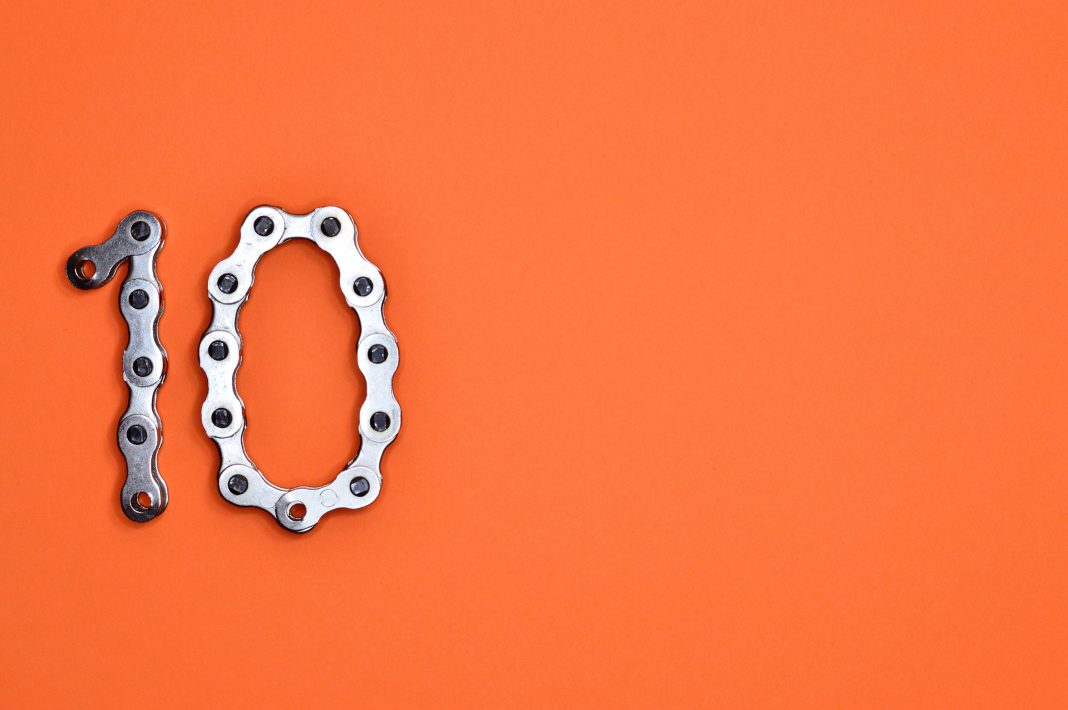| Issue #151 • January/February, 2015 |

It’s a mystery why one person can be poor but still proud, independent, and reasonably content while the guy next door is merely content to slide into a swamp of misery, blame, and dependence.
It’s a mystery why one middle-class person feels insecure, on edge, cash-strapped, and bitter while the neighbor down the way, who might have less, leads a more contented life.
Even the very well-off suffer the same disparities. While money can buy happiness (and does, up to an income of about $75,000 per year, according to recent research), there are plenty of people who have sufficient cash for anything they want and still wallow in misery.
What’s going on here? Why do so many people seem to choose to be unhappy?
Well, up to 50 percent of our happiness or unhappiness is probably built right into our genes. That’s according to Sonja Lyubomirsky, a psychology professor at the University of California, Riverside, who has spent decades conducting controlled experiments on happiness. Other researchers agree. Lyubomirsky says another 10 percent probably comes from our upbringing or our circumstances. So a full 60 percent of our degree of happiness is basically out of our control. That’s the bad news especially for those of us who didn’t get the “happy genes.”
In addition, there’s this very human phenomenon called hedonic adaptation.
That mouthful means, simply, that no matter what wonderful or terrible things happen, after a time we tend to return to whatever level of happiness is normal for us. Win the lottery and a year later we’re just as happy or miserable as we were the day before they drew our numbers. Get hit by a car and end up in a wheelchair? Chances are that eventually we’ll find we adjust to a new emotional norm that’s not so far from our old one. The same is true of other big life changes. Change jobs, move to a new location, or find a new love and we may discover a year or two down the road that we’re no happier than we were before. Hedonic adaptation also explains why all our amazing gadgets and conveniences don’t leave us with a permanent glow of joy. After a while they’re just … normal.
Unsurprisingly, some researchers have called this “the hedonic treadmill.” Yikes! What a phrase. It sounds as if we’re doomed to get nowhere on any quest for greater happiness.
But it’s not all bad news. Professor Lyubomirsky has found that at least 40 percent of our happiness is under our control. By the same token, some researchers reject the horrible hedonic treadmill in favor of a more hopeful concept. Instead, they say we have a “happiness set point” a setting we can at least partially control.
Think of a happiness set point as being like a thermostat. If your happiness is “set” to the equivalent of 68 degrees, then you may sometimes be “warmer” and sometimes “cooler,” but you’ll always return to that setting. If your set point is 72, then you’ll still have ups and downs, but you’ll always return to a “warmer” state of happiness than your grumbly, miserable neighbor whose happiness is set to the hedonic equivalent of a chilly 54.
But we also have the ability to change the settings on our personal “thermostats.” If you were born with a low set point, you may eventually be able to raise it. For some reason, most people don’t; but it’s possible.
In even better news, our life satisfaction set point can be even more easily raised than our happiness set point.
How does life satisfaction differ from happiness? According to Ed Diener, Senior Scientist for the Gallup Organization and one of the researchers in this field, “Life satisfaction refers to a cognitive evaluation or judgment of one’s life. Is my life overall going well? Has the entirety of my life been close to my ideal? If I could live my life over, would I choose essentially the same life or would I change much of it? People use information to make conscious judgments when they report ‘satisfaction,’ whereas moods and emotions occur as ongoing reactions to current events.”
To put it another way, happiness is a feeling, while life satisfaction is an evaluation of what we’ve achieved and how it’s worked out for us. As you probably know if you’re leading a Backwoods Home life (or even just reading this magazine as you dream of your future), we can create both more happiness and more life satisfaction through our own attitudes and actions.
So what are some of the ways of making sure that our “thermostats” are set to the most comfortable level we can personally achieve? In my experience (as a born depressive who gradually made a decent life for myself) it helps to have, or develop, 10 traits.

A sense of choice
If we feel we can make important decisions about our lives and carry them out, we’re more likely to be satisfied.
Commonly, we believe that the poor have fewer choices and the better off have more, but that’s not necessarily true. For instance, a “poor” person who has chosen material poverty for religious reasons, to pursue adventure, to live a simple life, or to avoid paying high taxes may actually feel they have more and better choices because of their lack of money than if they were rolling in dough. Conversely, a well-off person who yielded to family pressure to become a lawyer, marry the “right” spouse, and pay a big-time mortgage in a country-club neighborhood might feel utterly trapped.
Even people who’ve been rendered poor by disasters, theft, financial folly, or abuse are better off when they can think, “Well, maybe I put myself here and maybe I didn’t. But in any case, I can now choose how to respond to the situation I’m in.” We always have that choice.

Responsibility
And that leads to the next trait. Once you conceive you have choices, you then accept responsibility for making choices.
It’s funny that responsibility is always seen as onerous some dreary, painful duty. Because in a way it’s a privilege. Accepting responsibility is accepting and acting on our personal power.
Even if we’ve been whacked upside the head by bad health, crime, untrustworthy companions, fire, earthquake, or accidents, it feels better to be able to say, “I’m responsible for what I do now” than it does to lay about and blame God, the government, your mother, the one percent, or an uncaring universe.
Sure, sometimes accepting responsibility means we have to face people we’d rather not face and take on chores we’d rather avoid. Sometimes it leaves us feeling burdened by things we have to do or guilty about things we didn’t do. Nobody’s going to say that responsibility itself makes people happy. What it does do is lay the groundwork for greater, later satisfaction.

A connection to the future (planning)
This article grew out of a shorter piece I posted on my Backwoods Home blog. The original post didn’t include this trait, though it’s huge. Blog reader LarryA commented, “[M]y wife and I attended the wedding of a couple of school friends. During the reception they announced they had both quit smoking, because what they were spending on cigarettes would make the payments on a nice new car.”
Planning ahead, he noted, should be one of the first traits listed for greater life satisfaction. He went on, “No, the plans don’t always work, but they’re better than not having one.”
Now, personally I’m not that committed to long-term planning at least not in the rigid sense of having steps all spelled out for getting from Point A to Point Z. But whether you’re a serious planner or a hang-loose person, it is important to feel a connection to the future to understand that actions we take today have consequences tomorrow.

Creativity or spirituality
It’s funny how each of these traits for satisfaction keeps leading into the next. Because although any grownup can understand that actions have consequences, those who develop their creativity or have a sense of spirituality often possess heightened understanding of how today’s choices can become tomorrow’s realities. Creative or spiritual people “see beyond” not only in the sense of perceiving things that others may miss, but also in feeling connected to things that haven’t happened yet but can, depending on our choices.
It’s too bad that in our culture creativity has been raised on some silly pedestal where only artists, writers, musicians, and other odd souls are thought to stand. Because creativity is actually a trait we all possess and it comes in handy for many everyday things.
Creativity could be finding some way to utilize someone else’s discards or figuring out how to make scrumptious meals from simple, inexpensive ingredients. It could mean making inexpensive entertainment for ourselves and our children when money is tight. It could mean seeing a way to make an independent living after losing what we thought was a secure job. It is simply seeing and acting on possibilities that others may not perceive.
Both creativity and spirituality involve looking within oneself and living with one’s own mind, feelings, and beliefs. That can be painful at times, but doing so builds inner resources that in turn can help build life satisfaction.

Support networks
If looking within is important, so is looking to others. Happy, satisfied people have friends. And not the kind you get from clicking “like” buttons online or the kind you go drinking with but never really know. They have close connections to others (and that’s true even for hermits like me).
Friends offer support, both emotional and physical. They give reality checks. They carry us out of ourselves when we get too broody or are failing to see the forest for the trees. Both mental and physical health are improved by knowing that there’s somebody there for us, whether our need is for a good cry or somebody to care for us if we break a leg.
Equally importantly, for us to have good friends, we usually need to be good friends. Being good friends, though it’s sometimes a pain in the backside, means we’re less self-absorbed, more giving, more attuned to our surroundings, and more conscious that we live in a world where things outside us matter.

A belief in lemonade
You don’t have to be an optimist. In fact, recent research indicates that optimism may be overrated when it comes to being successful or happy. (For non-optimists who nevertheless seek satisfying lives, I highly recommend the book The Antidote: Happiness for People Who Can’t Stand Positive Thinking by Oliver Burkeman.) Optimism can work for optimists, but we pessimists, grouches, and cynics have our own ways of getting things to work out well.
Above all, people who aim most successfully for satisfaction understand that even terrible things can eventually have positive consequences.
That doesn’t mean we don’t feel loss or grief or fear or annoyance when bad things happen. On the contrary, we may feel them deeply. Yet at some level we know that “this, too, shall pass,” and that we may find growth and new opportunity on the other side of suffering. In the terrible moments, we may cry to the heavens, “Why me?” But we won’t get stuck there forever like some people do.
By acknowledging the possibility of positive consequences, we are open to them and help create them. In other words, people on the road to contentment know how to make the proverbial lemonade out of the bromidic lemons.

Frugality
Certainly in the Backwoods Home universe, satisfied people are neither extravagant nor stingy. They’re frugal. Uncontrolled spending and obsessive cheapness both imply an unhealthy relationship with money. Frugality, on the other hand, speaks of personal wisdom. It also speaks of a number of the other traits we’ve talked about above. Choice. Responsibility. Creativity. A connection with the future.
Frugality means setting and following priorities. It means getting creative with Grandma’s old maxim: “Use it up, wear it out, make it do, or do without.” It means choosing not to buy this while saving for some more important that. It means seeing the good possibilities within limitations and difficulties. In a world where money issues often get downright scary, frugality means feeling that we have some control even over situations that may be somewhat out of control.
Frugality is only partly about money. It’s much more about mindset.

Not thinking poor
The original blog post that led to this article was specifically about how to be happy and satisfied while not having much money. This article goes beyond that, but for many of us (even some folks with big bank accounts), “not thinking poor” is still an issue.
Obviously, being genuinely poor can be desperately stressful. It’s hell not to know where your next rent payment or next week’s groceries are coming from. It can be bitter seeing others casually acquiring things that are beyond your reach.
But middle-class and upper types have their own version of “thinking poor.” How many people with perfectly decent, reliable incomes lie awake at night fretting about their debts or fearing that something inflation, recession, divorce, illness, downsizing will come along and sweep away all their hard-won possessions?
People on the road to satisfaction acknowledge the possibilities of loss, but they don’t allow fears to dominate their lives.
Ironically, another form of “thinking poor” is having a consuming desire not to seem poor. One blog reader put that very well: “I have known people [who] would not eat foods they considered only fit for ‘poor’ people. Staples like beans, rice, corn bread, ramen noodles, onion sandwiches, mystery meat etc. I feel sad for them. Some of the best meals I have eaten were with ‘poor’ people. Beans, rice and cornbread scooped from cauldrons and platters and eaten while squatting on the ground is mighty fine eats. Just ask [your companions] to define hot before eating the salsa.”
Some of the greatest richness in the world is experienced by being open to experiencing and learning from simplicity, deprivation, and hardship.

Learning to relax (embracing the chaos)
This trait was suggested by my friend Joel who is both one of the poorest yet most contented people I know. He says, “When a plan or a routine fails … there’s always a period when you feel like you’re falling. The first instinct is to thrash around grasping for what isn’t there any more, but what you really need to be doing is deploying or rapidly composing Plan B. Plan B often proves flawed, but that’s fine: It’s a starting point and at least gets you working. Somewhere between Plan B(a) and B(z), you’ll find your new normal. But only if you’re working toward it.”
Get past the panic. Relax. Accept. Keep moving.
A small daily meditation helps, too. It helps calm the spirit and wake up the creative part of the brain.

Gratitude
We’ve all heard one short parable about gratitude (and perspective). Though it’s a thousand years old, a writer named Denis Waitley gets credit for putting it like this: “I had the blues because I had no shoes until upon the street, I met a man who had no feet.”
The lesson, of course, is be grateful for what you have. Satisfied people are grateful people. They dwell not on what they don’t have, but on what they do have that’s worth having.
Spend a few minutes every day and think of five things you’re grateful for, big or small. Write them down in a journal. Every so often, go back and read them over. You’ll soon be astonished that, even if your life feels difficult, you have a lot to be grateful for and a lot of “gratitude attitude” to carry you along.
The ultimate
What ultimately creates happiness and life satisfaction? Small choices. Day to day. Made over the course of a lifetime. Any time is a good time to start. Any time is a good time to practice.
(A big thank you to the amazing Commentariat at my “Living Freedom” blog at www.backwoodshome.com. Another big thank you to the Duffys for granting me such a powerful forum.)













